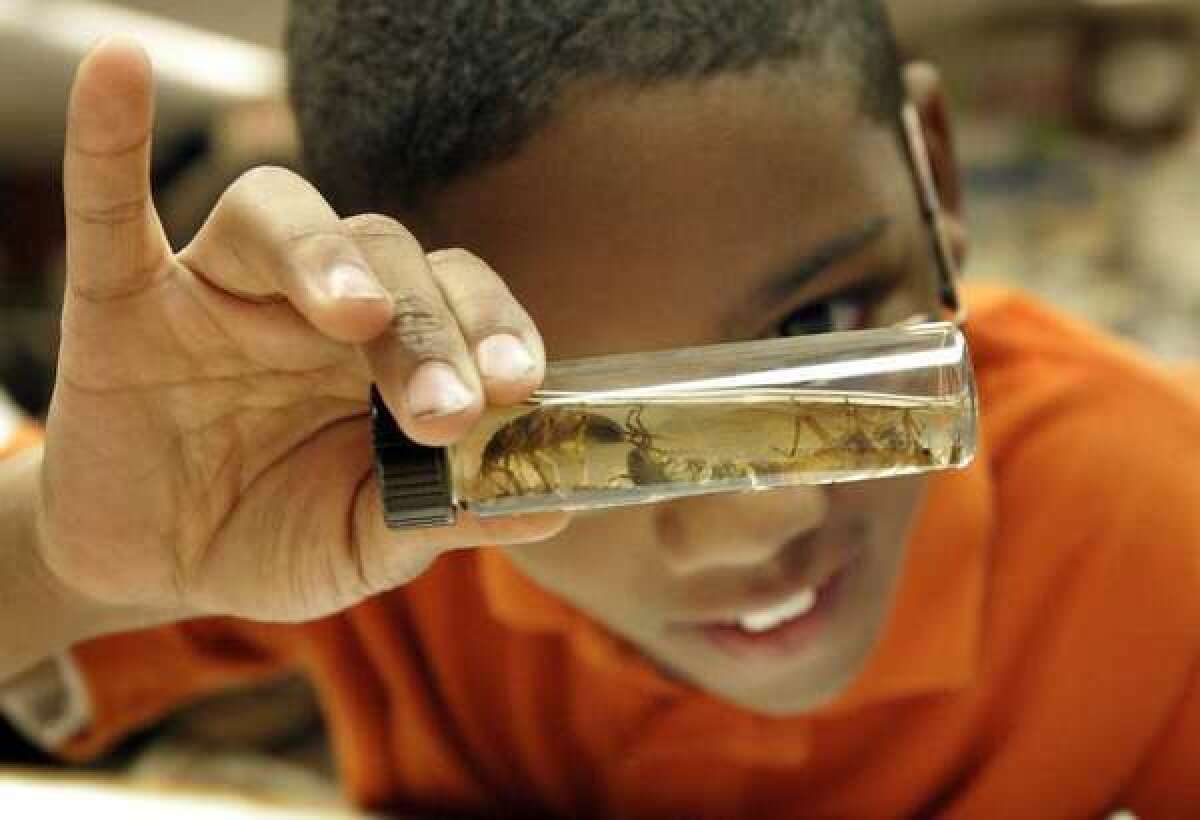Could nano-suits let life forms survive in space, seed planets?

Could primitive extraterrestrial life have traveled the universe in tiny spacesuits and colonized alien planets? Perhaps, according to a team of Japanese scientists who used electron beams to turn insect larvae’s natural secretions into a protective “nano-suit” that allowed the young bugs to survive in a vacuum for a whole hour.
The nano-suit, a 50-to-100-nanometer layer that allowed the soft-bodied insects to survive a vacuum that should have instantly killed them, was described this week in Proceedings of the National Academy of Sciences.
The scientists tested a number of different bug larvae in high vacuums in a scanning electron microscope and soon noticed something strange was happening. While most of the bug larvae shriveled up and died -- just as a human would if he or she hopped out of a spaceship without wearing an astronaut’s spacesuit -- the fruit-fly larvae seemed able to survive for 60 minutes in what should have been unbearable conditions.
The researchers studied the critters’ surfaces and found that, when exposed to the electron beams, the extracellular substances secreted onto the fruit fly’s body formed a protective layer of polymers that acted like a thin astro-suit, a few tens of nanometers thick. Fruit fly larvae that didn’t get the electron-beam treatment died in the vacuum. Clearly, the radiation was key to getting those secretions to fuse together into armor -- a little like 3D-printing a suit straight onto the bugs’ bodies.
Other species of bug larvae don’t excrete those substances, however -- so the electron beams won’t do any good. Instead, the scientists immersed the larvae in a 1% solution of Tween 20 (a nontoxic compound used in biological experiments) and then subjected the bugs to electron or plasma irradiation. The Tween 20 would act like the fruit-fly secretions and form the ultra-thin body armor.
All the creatures treated in this way survived the vacuum, including the flatworm Dugesia japonica, the ant Pristomyrmex punctatus and a sand-hopper called Talitrus saltator. They even seemed to grow up into normal, well adjusted adults, in spite of that early trauma of dealing with the void.
So if these bugs could survive such long periods in a vacuum, could they travel through space? Where would they get their spacesuits?
As it turns out, the authors point out, “energetic electrons and plasmas are known to occur commonly throughout the universe, including on planet Earth.” So that means these nano-suits could be created just about anywhere that life forms. And if they have those suits, and were somehow able to get space-borne -- maybe tossed up by an asteroid collision -- then perhaps these tiny creatures could survive long enough to seed other planets.
The authors do little to dissuade readers of this notion.
“Ever since Darwin, many [hypotheses] for the early evolution of life have been proposed, including the Panspermia hypothesis, which advocates that simple life forms can travel widely throughout the universe,” they write.
Believe it or not, there are also perfectly practical reasons to explore nano-suits for bugs. When scientists want to study these creatures in high detail under a scanning electron microscope, they have to observe them in a vacuum, because any air molecules bouncing around in the chamber would cause the electrons to scatter, ruining the image.
Thus, the critters imaged in these microscopes are very dead -- and it’s a major roadblock for scientists who want take high-resolution snapshots of subjects while they’re still alive. (I learned about this recently from UC Irvine biologist Catherine Loudon, who came up against this very problem while studying the secrets of natural bedbug traps.)
If there were an efficient way to allow tiny animals to survive in that chamber, it would be a major boon for scientists like Loudon, yearning to examine their subjects up close, but still in vivo.
Follow me on Twitter @aminawrite.







